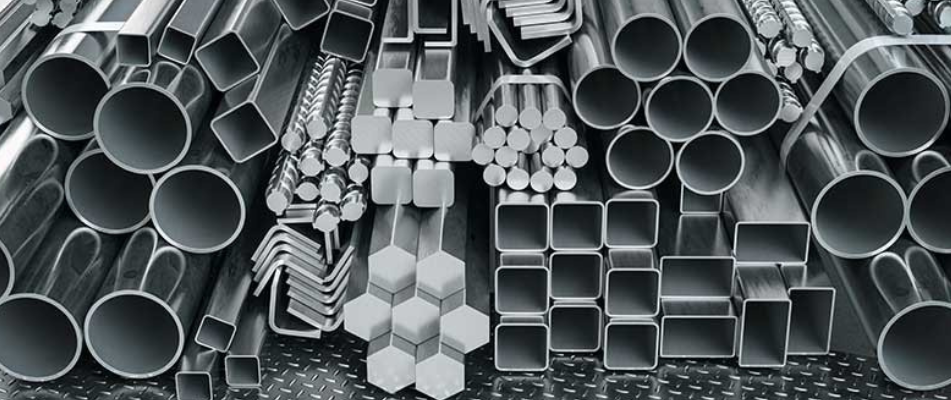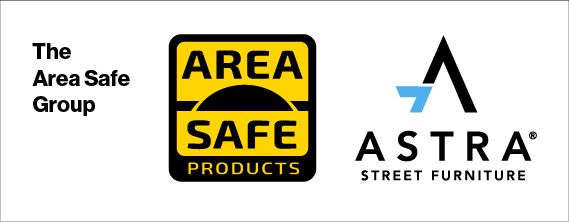Which is better when it comes to outdoor furniture - Steel or Aluminium?

Something we’re often asked by customers when they are selecting their outdoor street furniture - which material should they choose, steel or aluminium?
Well, the short answer is - it depends.
When selecting outdoor furniture, it's crucial to consider the materials used in its construction. Two popular options are steel and aluminium, each offering its own set of advantages and disadvantages.
In this article, we'll compare steel and aluminium, discuss their pros and cons, and recommend the best material for different outdoor furniture use examples.
Steel: Pros and Cons
Pros:
- Strength: Steel is known for its strength and durability, making it a reliable choice for outdoor furniture that can withstand the elements and resist damage from everyday use.
- Stability: Due to its weight, steel furniture is less likely to be blown away or knocked over by strong winds, providing a stable and secure option for outdoor spaces.
- Versatility: Steel can be moulded into various shapes and designs, allowing for a wide range of unique and stylish outdoor furniture options.
- Sustainability: Steel is 100% recyclable and is the most recycled material in the world. Steel has a higher recycled content than aluminium. Per kilogram, steel is a low carbon material compared to aluminium.
Cons:
- Weight: Steel furniture is typically heavier than aluminium, making it more difficult to move and rearrange if free-standing furniture is preferred over against bolting down.
- Rust: If not properly treated or maintained, steel can be susceptible to rust and corrosion, which can compromise the furniture's appearance and longevity. Always make sure you are purchasing steel that has been galvanised, as this process adds a protective layer to the steel which limits corrosion. Steel that is powder coated or painted directly over black steel (raw steel) without protecting it first with zinc galvanising, will very quickly start rusting.
- Cost: Steel is often more expensive than aluminium, which can impact your overall outdoor furniture budget.
- Sustainability: The overall weight of steel can offset the benefits of low carbon per kilogram. The life expectancy of steel is shorter than aluminium.

Our Paris DDA Seat (pictured above) is available with strong smooth slats on a galvanised and powder coated heavy duty 5mm steel frame, making it a reliable choice to withstand the elements and resist damage from everyday use.
Aluminium: Pros and Cons
Pros:
- Lightweight: Aluminium is a lighter material compared to steel, making it easier to move and rearrange free-standing outdoor furniture as needed.
- Corrosion Resistance: Aluminium is naturally resistant to rust and corrosion, making it a maintenance-free option for outdoor furniture.
- Flexibility: Aluminium can be easily moulded into various shapes and designs, providing a wide range of stylish and unique outdoor furniture options.
- Sustainability: Aluminium is 100% recyclable and is often produced using low-carbon hydro-electricity. Compared to steel, aluminium is lightweight which offsets its higher carbon content per kilogram. The life expectancy of aluminium is longer than steel.
Cons:
- Strength: While aluminium is durable, it may not be as strong as steel, which can make it more susceptible to damage under heavy use or extreme conditions.
- Stability: Due to its lightweight nature, aluminium furniture may be more prone to being blown away or knocked over by strong winds.
- Thermal Conductivity: Aluminium can heat up quickly when exposed to direct sunlight, which can make the furniture uncomfortable to touch during hot weather. By adding a powder coat layer to the seat or table top plank, such as our Woodgrain Western Red Cedar or Woodgrain Blonde Oak slat options, you can reduce the heat conductivity and make it more comfortable to sit on. By comparison, hardwood or recycled composite slats heat up less quickly but can reach higher temperatures than aluminium when in full sun.
- Sustainability: Aluminium has a lower recycled content than steel. Per kilogram, aluminium has a higher carbon content compared to steel.

Our London DDA Seat (pictured above) is a premium product with a carefully designed cast aluminium (silver powder coated) frame and smooth slender slats. The cast aluminium frame is easy to move and rearrange.
Examples and Recommendations
Selecting the ideal outdoor street furniture material depends on various factors, including location, weather, and user-specific safety requirements. Understanding these unique aspects of each project is crucial when choosing between steel and aluminium furniture.
Here are some common applications for our street furniture and our recommendations for each scenario.
- Public Spaces: For public spaces like parks or university common spaces that experience high foot traffic and heavy use, steel furniture is a great option due to its strength, durability, and stability. However, if the park is in a coastal or high-humidity area, aluminium may be a better choice due to its corrosion resistance.
- Coastal Locations: In coastal environments, outdoor furniture is exposed to salt air and increased humidity, making corrosion resistance a top priority. Aluminium's natural resistance to rust and corrosion makes it an ideal choice for coastal locations, ensuring your furniture maintains its appearance and functionality over time.
- Schools: When considering outdoor furniture for schools, safety and durability are paramount. Steel, with its strength and stability, can withstand the rough-and-tumble play of students while offering a secure and stable seating option. However, it's essential to ensure that steel furniture is properly treated and maintained to prevent rust and sharp edges. Aluminium, while not as strong as steel, is still a viable option due to its lighter weight, which may reduce the risk of injuries when children move or play around the furniture. Additionally, its rust resistance can lead to lower maintenance requirements.
- Aged Care Facilities: In these settings, lightweight and easy-to-move furniture is crucial to accommodate the needs of the elderly residents. Aluminium, with its lighter weight and low maintenance requirements, is an excellent choice for aged care facilities.
- Urban Spaces and Shopping Centers: In high-traffic commercial areas, steel's strength and durability make it the ideal choice to withstand the rigours of daily use. For added corrosion resistance, ensure the steel furniture is properly treated and maintained.
Ultimately, each project is unique, and the best choice of material for outdoor street furniture will depend on the specific needs and requirements of each location. By considering factors such as location, weather, and user safety, you can make an informed decision and select the perfect material for your outdoor street furniture.
So, which is better? Steel or aluminium?
Both steel and aluminium have their unique advantages and disadvantages, making each material suitable for different outdoor furniture applications. Ultimately, the best choice will depend on your specific needs, preferences, and the intended use of your outdoor space. By considering factors such as weight, strength, corrosion resistance, sustainability and cost, you can make an informed decision and select the perfect material for your outdoor furniture.
If you need help choosing between steel and aluminium furniture for your next project, get in touch with the team at www.astrastreetfurniture.com.au and let us help you choose the best furniture for your specific requirements.

 Aluminium Plank Furniture
Aluminium Plank Furniture Architectural Bollards
Architectural Bollards Benches
Benches  Bike Parking
Bike Parking Bin Enclosures
Bin Enclosures  Commercial Picnic Tables
Commercial Picnic Tables Concrete Plinth Mount Seating
Concrete Plinth Mount Seating Curved Benches
Curved Benches Drinking Fountains
Drinking Fountains Litter Bins
Litter Bins Outdoor Classrooms
Outdoor Classrooms Planter Boxes
Planter Boxes Seating
Seating Shelters
Shelters Skate Deterrents
Skate Deterrents  Tree Protection
Tree Protection AS Urban Suite
AS Urban Suite Athens Suite
Athens Suite Barcelona Suite
Barcelona Suite Berlin Suite
Berlin Suite Copenhagen Suite
Copenhagen Suite Dublin Suite
Dublin Suite Florence Suite
Florence Suite Glasgow Suite
Glasgow Suite Liverpool Suite
Liverpool Suite London Suite
London Suite Madrid Suite
Madrid Suite Manchester Suite
Manchester Suite  Milan Suite
Milan Suite Orbit Suite
Orbit Suite Paris Suite
Paris Suite Prague Suite
Prague Suite  Portsmouth Suite
Portsmouth Suite Rome Suite
Rome Suite Spencer Suite
Spencer Suite Venice Suite
Venice Suite  Vienna Suite
Vienna Suite Woodville Suite
Woodville Suite School Furniture
School Furniture Healthcare Furniture
Healthcare Furniture Local Government Furniture
Local Government Furniture Park & Street Furniture
Park & Street Furniture Shopping Centre Furniture
Shopping Centre Furniture Aged Care Furniture
Aged Care Furniture